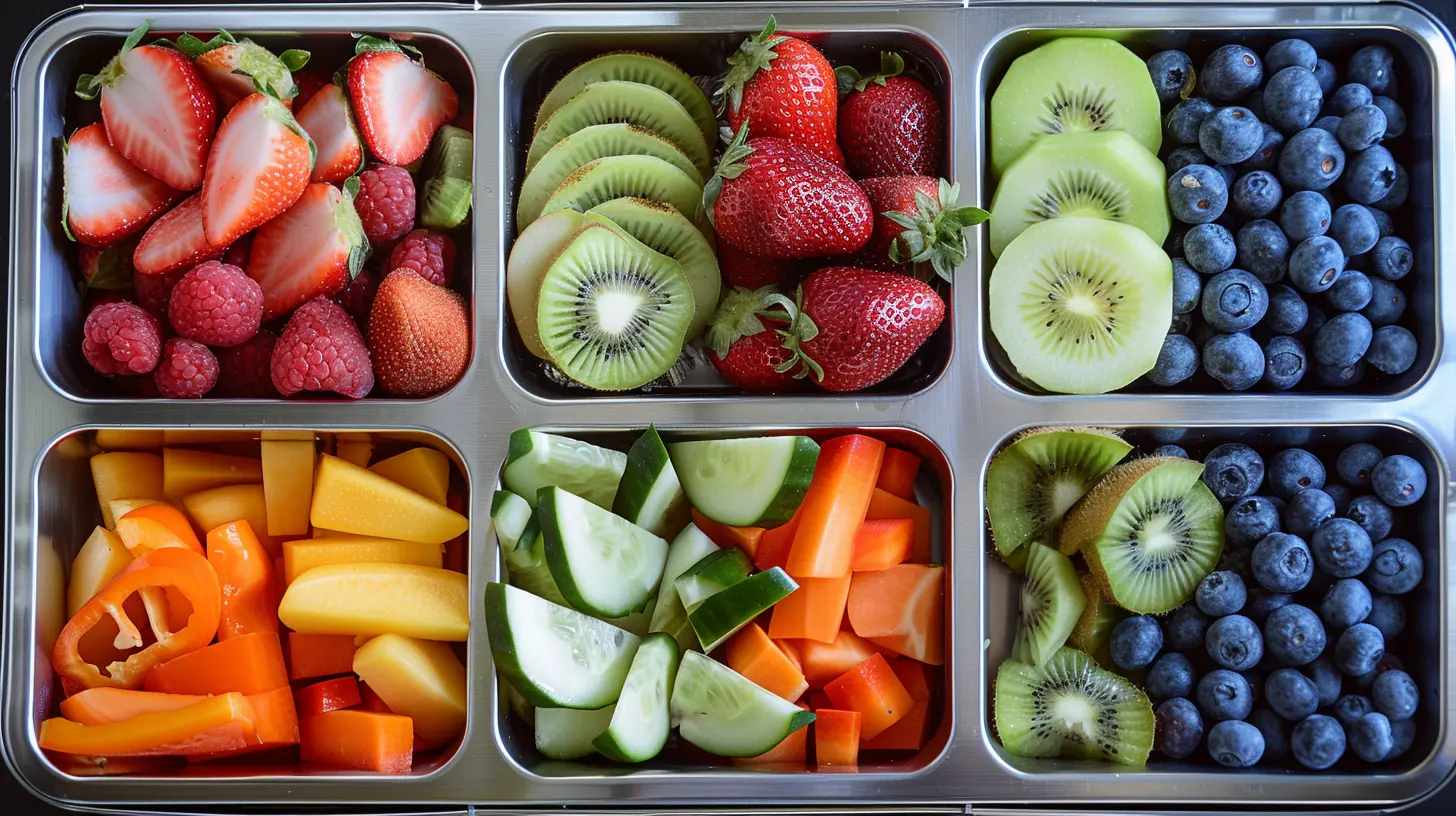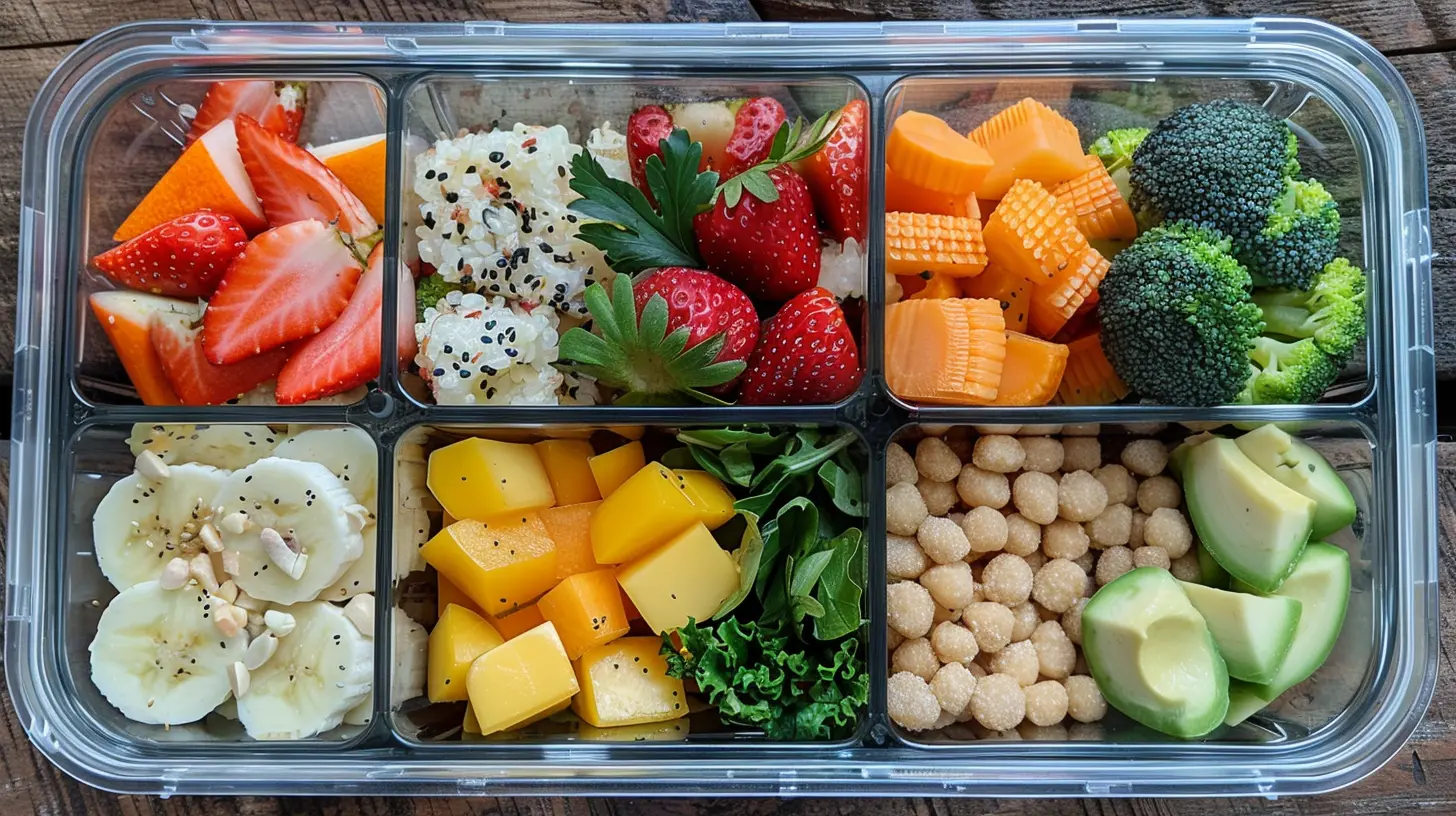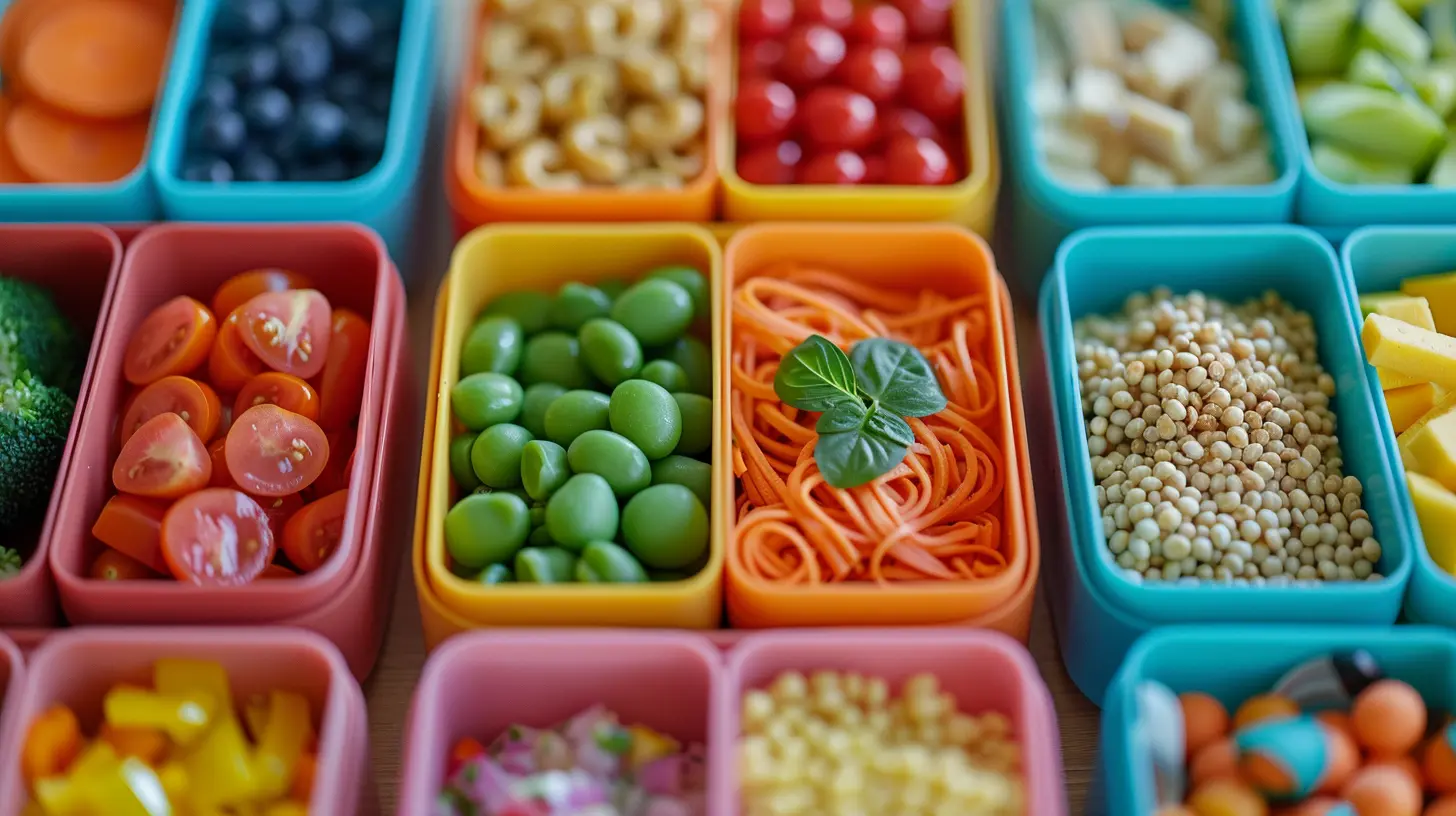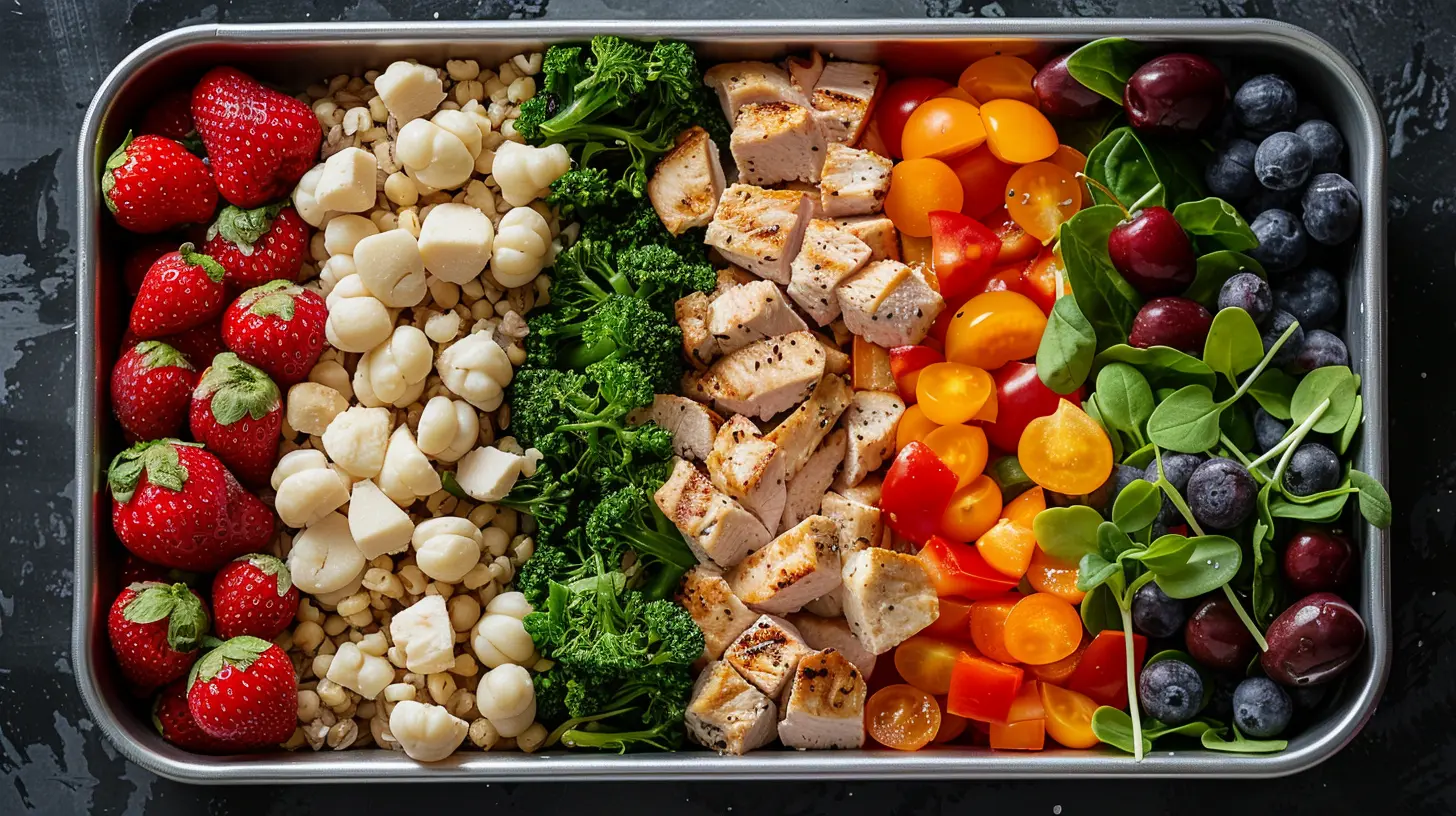Healthy Lunchbox Essentials: What to Pack for Optimal Brain and Body Fuel
24 October 2025
Packing lunchboxes every day can feel like a never-ending chore, right? You’ve got picky eaters, tight schedules, and the constant struggle to balance nutrition with food your kids will actually eat. But here's the thing — what we feed our kids in those lunchboxes seriously impacts more than just their bellies. It fuels their brains, helps them stay focused in the classroom, boosts their mood, and even supports their growth.
So, if you're stuck in a sandwich-and-chips rut or wondering if those store-bought snack bars really count as "nutritious", stick around. We're going to break down the true essentials of a healthy, energizing lunchbox — one that hits the sweet spot between tasty and wholesome.

Why Brain and Body Fuel Matters at School
Before we dig into what to pack, let’s talk about the “why”.Kids burn a ton of energy during the day — not just physically from playing at recess, but mentally too. Think about it: they’re learning new math skills, navigating social situations, following directions, and staying focused for hours. It’s a lot.
Feeding their brains means giving them the right mix of nutrients to help with memory, attention span, and even emotional regulation. This goes beyond just avoiding sugar crashes (though we’ll talk about that too!). If we want our kids to thrive — not just survive — what goes into their lunchbox matters big time.

The Building Blocks of a Brain-Boosting Lunchbox
Let's break this down into simple, easy-to-follow components. Think of each lunchbox like a little puzzle, and each piece supports energy, focus, and growth.1. Protein Power
Protein is like the engine oil for your child’s body and brain — it keeps everything running smoothly. It helps with muscle development, repairs tissues, and most importantly for school-aged kids, keeps them feeling full and focused.Great Protein Picks:
- Sliced turkey or grilled chicken- Hard-boiled eggs
- Cheese cubes or string cheese
- Hummus or Greek yogurt
- Nut butters (if school's not nut-free)
- Tofu or tempeh chunks for plant-based families
If you're making sandwiches, try whole grain bread with turkey and avocado. Not into sandwiches? A bento-style lunch with rolled deli meat, cheese, and whole grain crackers works just as well.
2. Complex Carbs for Long-Lasting Energy
Carbs aren’t the enemy — not when you choose the right kind. Complex carbohydrates break down slowly, giving your kids a steady flow of energy (goodbye post-lunch slump!). Plus, they're essential for brain function.Smart Carbohydrate Choices:
- Whole grain breads, wraps, or pitas- Brown rice or quinoa
- Sweet potato slices or roasted cubes
- Oatmeal muffins (bonus points if homemade!)
- Lentils or beans
Avoid the refined sugars and white breads that can spike blood sugar and trigger a crash shortly after. If you’re packing a treat, try swapping a sugary cookie for a homemade oat bar with dates or applesauce.
3. Healthy Fats = Brain Food
Here’s where the brain really gets its boost. Omega-3 fatty acids in particular are linked to better concentration and memory. Plus, fats help absorb important vitamins from other foods — win-win.Fat-Friendly Foods:
- Avocado slices or guacamole cups- Chia seeds or ground flaxseed in a smoothie
- Nuts and seeds (again, check your school’s allergy policies)
- Full-fat Greek yogurt
- Olive oil drizzled over pasta salad
Add a small container of ranch or tzatziki made with yogurt for dipping veggies — it adds fat and fun flavor.
4. Fresh Fruits and Veggies for Fiber and Vitamins
Let’s be real: getting kids to eat veggies can be a battle. But fruits and vegetables are loaded with the vitamins and antioxidants that help support immune health, digestion, and overall well-being.Easy, Kid-Friendly Produce Ideas:
- Apple slices with cinnamon or nut butter- Carrot sticks or cucumber rounds
- Sugar snap peas or mini bell peppers
- Berries or grapes (cut for younger kids)
- Roasted veggie chips (homemade or from clean brands)
Presentation matters here. If you’ve got time, make it colorful. Think rainbow-themed lunchboxes, fruit kabobs, or veggie “flowers” cut with cookie cutters.
5. Hydration is Key
A lot of kids are mildly dehydrated at school — and even mild dehydration can affect concentration and mood. That sugary juice box might not be doing them any favors.Smarter Drink Swaps:
- Water (plain or infused with berries or citrus)- Milk or unsweetened milk alternatives
- Small smoothies made with fruit + Greek yogurt
If you're packing juice, go for 100% juice and keep it to a small portion — say 4 ounces. But water is always the MVP here.
6. A Little Something Sweet (The Right Way)
Let’s face it — kids love sweets. And honestly, don’t we all? You don’t have to cut sugar out completely. The goal is to make it smarter, not militant.Treats That Still Nourish:
- Date + nut energy bites- Dark chocolate squares with almonds
- Whole wheat banana muffins
- Chia pudding with cocoa
- Yogurt bark with berries and honey
By making treats from home, you can control what goes in. Plus, kids love being part of the baking process — try letting them help make their lunchbox snacks on the weekends.

Sample Lunchbox Combos
Need some inspiration? Here are a few go-to lunchbox combos that tick all the brain-and-body fuel boxes:🌮 Taco Tuesday Bento:
- Mini whole wheat tortillas- Grilled chicken strips + cheese
- Side of guac
- Grapes + cherry tomatoes
- Water with lime slices
🥪 Sandwich Classic with a Twist:
- Whole grain bread with turkey, spinach, and hummus- Carrot sticks + ranch dip
- Sliced apple with peanut butter
- Homemade oat bar
- Water or milk
🥗 Plant-Based Power Bowl:
- Quinoa + black beans + roasted sweet potato- Side of cucumber spears
- Cantaloupe chunks
- Chia pudding with cocoa
- Coconut water
🧁 Breakfast-for-Lunch Box:
- Mini egg muffin with veggies- Banana + cinnamon
- Whole grain blueberry muffin
- Almonds (if allowed)
- Milk box or water

Dealing with Picky Eaters
Every parent has faced the agony of unpacking an untouched lunchbox. So how do you handle picky eaters without turning lunch into a battlefield?- Get them involved: Let them help pack their lunch. Give them choices, like “carrots or cucumbers?”
- Keep it small: A lunchbox packed with six unfamiliar superfoods may feel overwhelming. Introduce new foods one at a time alongside familiar favorites.
- Make it fun: Use colorful containers, cute picks for fruit, or sandwiches cut into fun shapes.
- Be consistent: Keep offering a variety of foods — even if they say “no” a hundred times. Often, it takes several tries before a child will accept a new food.
Timing, Storage, and Safety Tips
Even the perfect lunchbox can flop if it’s warm and soggy by noon. Here are a few quick tips to keep everything fresh:- Use thermal containers for soups, casseroles, or warm pasta dishes.
- Invest in an insulated lunchbox and ice packs to keep yogurt or meats cool.
- Pack items in separate compartments or containers to avoid sogginess.
- Pre-peel or pre-cut fruits like oranges or kiwis so they’re easy to eat.
Final Thoughts: Keep It Balanced, Not Perfect
Here’s the golden rule: every lunch doesn’t need to be a Pinterest-worthy masterpiece. Honestly, it’s more about consistency than perfection. You’re not aiming for a flawless lunch 5 days a week — you're aiming for balance over the long haul. Some days it might be chicken nuggets and carrot sticks, and that’s okay.The goal is to fuel your child’s body and brain with food that supports them in feeling their best. Mix in variety, use fresh ingredients when you can, and don’t sweat the imperfect days.
Your child won’t remember every single sandwich, but they’ll remember that they felt good, had energy, and stayed full 'til the final bell.
all images in this post were generated using AI tools
Category:
Childrens HealthAuthor:

Tara Henson
Discussion
rate this article
1 comments
Raine McAnally
Focus on whole foods, proteins, and healthy fats for optimal growth and energy.
November 11, 2025 at 5:57 AM

Tara Henson
Absolutely! Whole foods, proteins, and healthy fats are key for fueling both brain and body. Great advice for healthy lunchbox essentials!


